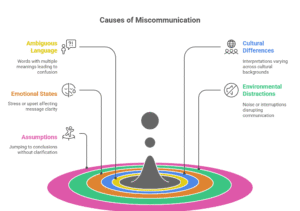On-Demand Outsourcing BPO Services for Healthcare Providers With 24/7 Coverage!
Save up to 70% on staffing costs!
Browse Specialty Staffing ServicesInsurance Verification Delays: A Critical Bottleneck in Patient Registration

In modern healthcare operations, efficiency at the front desk can make or break the patient experience. One major area where delays and missteps occur is during insurance verification. The consequences of incomplete or delayed verification are significant—patients may be registered without confirmed coverage, leading to claim denials, billing issues, and a breakdown in trust between patients and providers.
The Challenge: Unconfirmed Coverage at Registration
Many healthcare providers struggle with a recurring operational issue—patients being registered before their insurance coverage is verified. This delay is often due to outdated verification systems, lack of real-time integration, or gaps in staff training. When insurance verification is left incomplete or delayed until after the patient visit, it opens the door to a host of problems:
-
Denied claims from payers due to ineligibility or incorrect plan information
-
Delayed reimbursements that impact revenue cycle performance
-
Patient dissatisfaction resulting from unexpected out-of-pocket expenses
-
Increased administrative workload to retroactively correct claim data
Such issues not only burden the administrative staff but also compromise the financial stability of the organization.
The Resolution: Three Key Strategies for Streamlining Insurance Verification

To eliminate delays and improve the accuracy of patient intake, healthcare providers must embrace proactive, tech-enabled, and staff-focused solutions. Here are three essential strategies:
1. Integrate Real-Time Insurance Eligibility Checks
The first line of defense is automation. By integrating real-time eligibility verification tools into the electronic health record (EHR) or patient registration systems, providers can instantly confirm a patient’s active coverage status. This ensures that patients are cleared before services are rendered, reducing claim rejections and billing disputes.
2. Verify Insurance Details During Pre-Registration
Where possible, initiate insurance verification before the patient arrives at the facility. During the pre-registration call or online check-in process, confirm key insurance details—payer name, member ID, group number, and policy status. This step helps identify issues such as inactive coverage or plan mismatches well in advance, allowing for corrections without delaying care.
3. Train Front Desk Staff on Payer-Specific Rules
Even the best systems fall short without knowledgeable users. Training front desk personnel on payer-specific requirements, common eligibility codes, and documentation standards is critical. A well-informed registration team can identify discrepancies, flag issues early, and communicate clearly with patients about their financial responsibility.
What Did We Learn?
Insurance verification delays may seem like an administrative inconvenience, but they carry far-reaching consequences for revenue cycle health and patient satisfaction. By adopting real-time verification technology, enforcing pre-registration protocols, and investing in frontline staff training, providers can transform a vulnerable touchpoint into a streamlined and efficient process. In doing so, they not only protect their bottom line but also enhance the patient journey from the very first interaction.
What People Are Asking?
1. Why is insurance verification important?
It prevents claim denials, ensures accurate billing, and confirms patient coverage before services are rendered.
2. What causes insurance verification delays?
Common causes include outdated systems, incomplete patient information, and lack of staff training.
3. How can real-time eligibility checks help?
They instantly confirm active coverage and reduce errors during patient registration.
4. When should insurance be verified?
Ideally during pre-registration or before the patient’s appointment to avoid delays and surprises.
5. What role does staff training play?
Training helps front desk staff understand payer rules and quickly resolve coverage discrepancies.
Disclaimer:
For informational purposes only; not applicable to specific situations.
For tailored support and professional services
Please contact Staffingly, Inc. at (800) 489-5877
Email: support@staffingly.com
About This Blog: This Blog is brought to you by Staffingly, Inc., a trusted name in healthcare outsourcing. The team of skilled healthcare specialists and content creators is dedicated to improving the quality and efficiency of healthcare services. The team passionate about sharing knowledge through insightful articles, blogs, and other educational resources.
 Book a Demo to Build Your Team Today!
Book a Demo to Build Your Team Today!

 Read Case Studies
Read Case Studies 



 Virtual Medical Assistants
Virtual Medical Assistants



